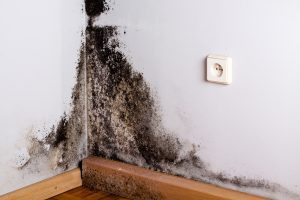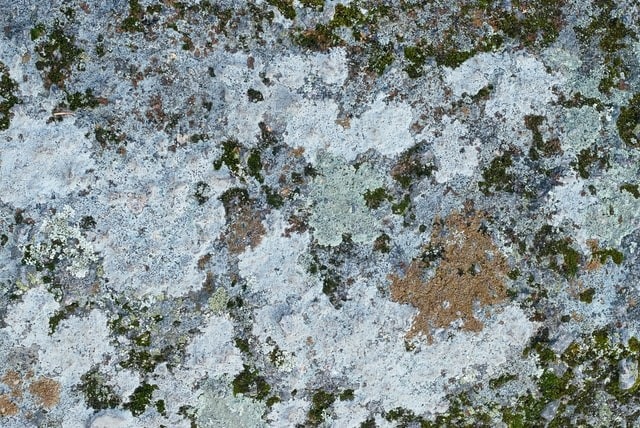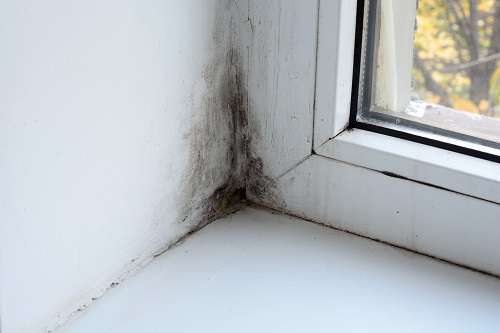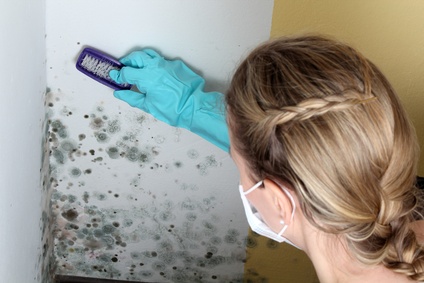How to Get Rid of Mold from Every Home Surface
Dealing with molds can be a daunting challenge, whether you are moving into a new house or simply deep cleaning.
Foul-smelling and slimy; moldMold is a type of fungus that grows in damp or humid conditi... More growth at home can prove to be quite dangerous for both families and pets.
Below, we have articulated some efficient methods to get rid of moldMold is a type of fungus that grows in damp or humid conditi... More from every home surface. Good Luck!
Know the Type of Mold
You may think moldMold is a type of fungus that grows in damp or humid conditi... More is moldMold is a type of fungus that grows in damp or humid conditi... More.
Well, there is a difference. Every house hosts a diversity of molds, and each one requires a slightly different cleaning technique. So, before you begin the mold-cleaning quest, an important thing to equip yourself with is knowledge about moldMold is a type of fungus that grows in damp or humid conditi... More type.

MoldMold is a type of fungus that grows in damp or humid conditi... More has the ability to grow anywhere as long as there is moisture
· Mildew
MildewMildew is a type of fungus that grows on damp surfaces, typi... More, a surface moldMold is a type of fungus that grows in damp or humid conditi... More, is the most commonly found type in houses. It survives and grows on warm and damp surfaces, including in bathrooms and basements. If you have things stored in a damp basement, it is likely that mildewMildew is a type of fungus that grows on damp surfaces, typi... More will infest those items too.
This particular moldMold is a type of fungus that grows in damp or humid conditi... More type has a white/grey, powdery, and clumped appearance. However, with time, the moldMold is a type of fungus that grows in damp or humid conditi... More will turn darker in color (brown or black). Hence, imitating soil accumulation.
Sometimes, it is difficult to identify between soil and aged mildewMildew is a type of fungus that grows on damp surfaces, typi... More. To unravel, you can dab the stain with a cotton swab soaked in chlorine bleach. The stain will lighten if it’s mildewMildew is a type of fungus that grows on damp surfaces, typi... More.
· Mucor
The mucor is an allergenic moldMold is a type of fungus that grows in damp or humid conditi... More type that grows in thick patches. It has a white-greyish appearance and forms colonies quickly. This particular moldMold is a type of fungus that grows in damp or humid conditi... More type is present near air conditioning systems and damp places. However, it is much less common than mildewMildew is a type of fungus that grows on damp surfaces, typi... More.
Common Moldy Places in your Home & Solutions
Generally, moldMold is a type of fungus that grows in damp or humid conditi... More grows in damp and humid places only. That is what you might have heard from everyone, right? Well, then, you might be highly mistaken!
MoldMold is a type of fungus that grows in damp or humid conditi... More is present almost everywhere. It is on all the surfaces, both indoors and outdoors. However, it requires moisture and food energy to get activated and establish a colony that is visible to the average human eye.
Below, you will find some common moldy places in your home and ways to clean them. If you have a large moldMold is a type of fungus that grows in damp or humid conditi... More problem, removing it yourself can be dangerous. It is best to call a mold remediation professional to handle the removal of significant moldMold is a type of fungus that grows in damp or humid conditi... More growth.

Refrigerators are a very comfortable place for moldMold is a type of fungus that grows in damp or humid conditi... More to grow
Household Appliances
Yes, it’s quite gross, but moldMold is a type of fungus that grows in damp or humid conditi... More tends to grow in appliances and devices that we use regularly. These include:
- Washers
- Coffee Makers
- Blenders
- Refrigerators
All of these household devices offer moisture, heat, or food to encourage moldMold is a type of fungus that grows in damp or humid conditi... More growth. However, at times, moldMold is a type of fungus that grows in damp or humid conditi... More also survives and grows on items like ceiling fans. Perhaps, this is why regular maintenanceMaintenance is the routine care, inspection, and repair of a... More and cleaning of the house is highly recommendable by healthcare experts.
You can get rid of moldMold is a type of fungus that grows in damp or humid conditi... More in washers by running a cycle of hot water and chlorine bleach. (Please do not put in any clothes while cleaning!) Practice this method once every month.
For other appliances, you can use distilled white vinegar to clean as well as inhibit moldMold is a type of fungus that grows in damp or humid conditi... More development.
Fabric/Upholstery/Curtains
MoldMold is a type of fungus that grows in damp or humid conditi... More accumulation can grow in fabric if you reside in a damp and humid climatic zone. However, do not worry!
You can clean moldMold is a type of fungus that grows in damp or humid conditi... More from carpets, upholstery, clothes, and any other surface with fabric easily. First, remove all the moldMold is a type of fungus that grows in damp or humid conditi... More patches by brushing.
Ensure that you are in a place where the moldMold is a type of fungus that grows in damp or humid conditi... More sporesSpores are microscopic reproductive units of fungi or mold t... More cannot make it indoors. Then, if the item is washable, create a solutionA solution is a homogeneous mixture of two or more substance... More of hot water and disinfectantA disinfectant is a chemical substance used to kill or inact... More. Scrub the affected area with it.
If the stain remains, then create a solutionA solution is a homogeneous mixture of two or more substance... More of oxygenOxygen is a chemical element essential for combustion and li... More bleach and water and soak the fabric in it for few hours.
Tiles and Grout
Cleaning moldMold is a type of fungus that grows in damp or humid conditi... More and mildewMildew is a type of fungus that grows on damp surfaces, typi... More from tile and grout is quite simple. You can purchase a cleaning product, though chlorine bleach and water are quite effective too.
To clean, create a solutionA solution is a homogeneous mixture of two or more substance... More of these two liquids with the ratio of 1:16. Let the solutionA solution is a homogeneous mixture of two or more substance... More remain on the affected area for at least 15-minutes. Then rinse with water and let it dry.
Some Effective & Organic Cleaning Methods
There is a diversity of chemical cleaning solutions and products available in the market. However, there is a collection of organic methods that you can use too. These include:
· Hydrogen Peroxide
Hydrogen peroxide is a powerful antiviral, antifungal, and antibacterial solutionA solution is a homogeneous mixture of two or more substance... More. You can use it on a variety of surfaces, such as tiles and hard flooring.
To use, pour a 3-percent concentration of Hydrogen peroxide in a spray bottle and apply to the affected area. Leave it on the surface for approximately 10-minutes before scrubbing. Once scrubbed, wipe the surface dry.

Baking soda can help removing moldMold is a type of fungus that grows in damp or humid conditi... More smell from washing appliances
· Baking Soda
It would not be wrong to refer to baking soda as a magical remedy for all home problems considering its versatile usage. Apart from odorAn odor is a smell, often detectable by the human nose, whic... More and dirt removal, you can treat the toughest of moldMold is a type of fungus that grows in damp or humid conditi... More patches with it too!
The baking soda can remove all the moisture that encourages moldMold is a type of fungus that grows in damp or humid conditi... More growth as well. To clean, add ¼-tbsp of baking soda in a spray bottle filled with water.
Shake it thoroughly to ensure every particle dissolves. Apply it to the affected area, scrub to remove the moldMold is a type of fungus that grows in damp or humid conditi... More, and then rinse the surface.
Next, spray the solutionA solution is a homogeneous mixture of two or more substance... More again and let it dry completely. This particular step will ensure the moldMold is a type of fungus that grows in damp or humid conditi... More does not return.
· Tea Tree Oil
All the essential oils are an effective method to treat moldMold is a type of fungus that grows in damp or humid conditi... More build-up. The tea tree oil is an insect repellent, antiseptic, and deodorizer. It is also a fungicide that can eradicate all molds upon contact.
Simply mix one teaspoon of the oil in one cup of water in a spray bottle. Shake vigorously to blend both together. Spray on the affected area, leave to dry, and wipe with a towel.
· Lemons
Believe it or not, lemons are excellent at getting rid of molds too. Lemons have high concentrations of acid that breaks down moldMold is a type of fungus that grows in damp or humid conditi... More and makes removal easy. These acids possess antiseptic, stain removal, and deodorizer properties.
Apply lemon juice on the affected moldy area, let it sit for 4 to 5-minutes, and wipe the surface.
Final Thoughts
MoldMold is a type of fungus that grows in damp or humid conditi... More growth and build-up on home surfaces can cause serious health concerns, such as respiratory infections. It is important to keep all home surfaces clean and mold-free for a healthy lifestyle. However, you should not try DIY moldMold is a type of fungus that grows in damp or humid conditi... More removal in cases in which there is extensive moldMold is a type of fungus that grows in damp or humid conditi... More growth. In these cases, it is best to call a mold remediation professional who can remove large amounts of moldMold is a type of fungus that grows in damp or humid conditi... More and restore the damaged areas.













